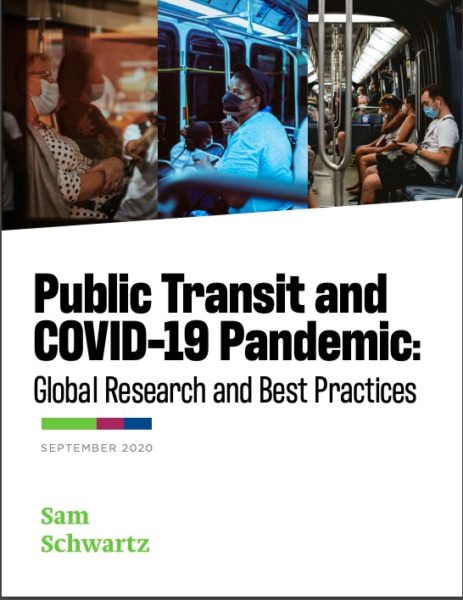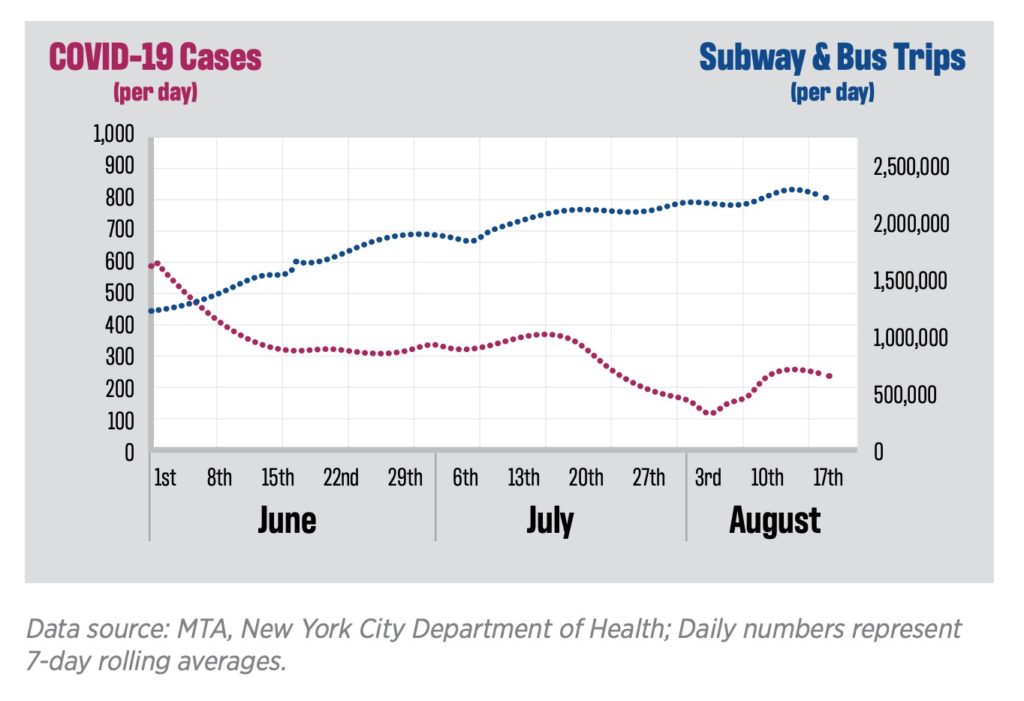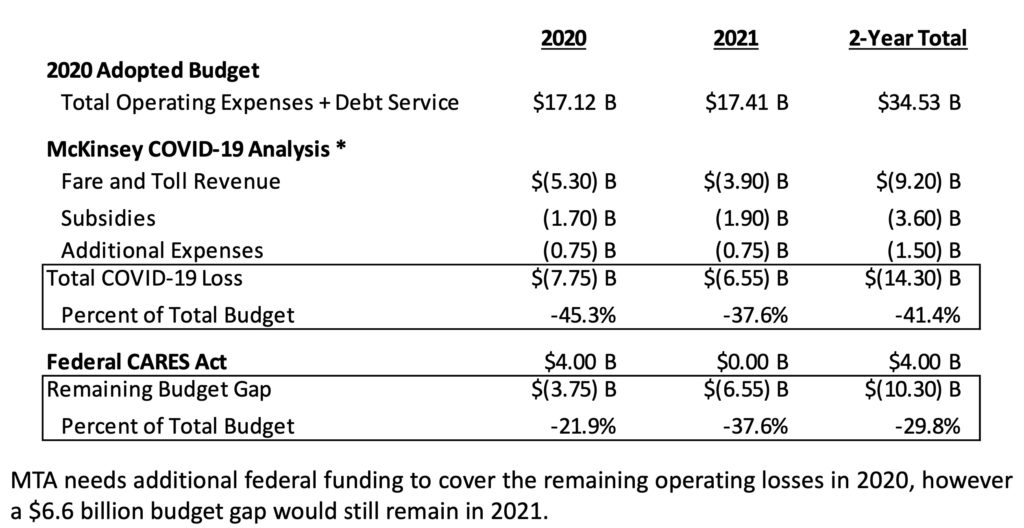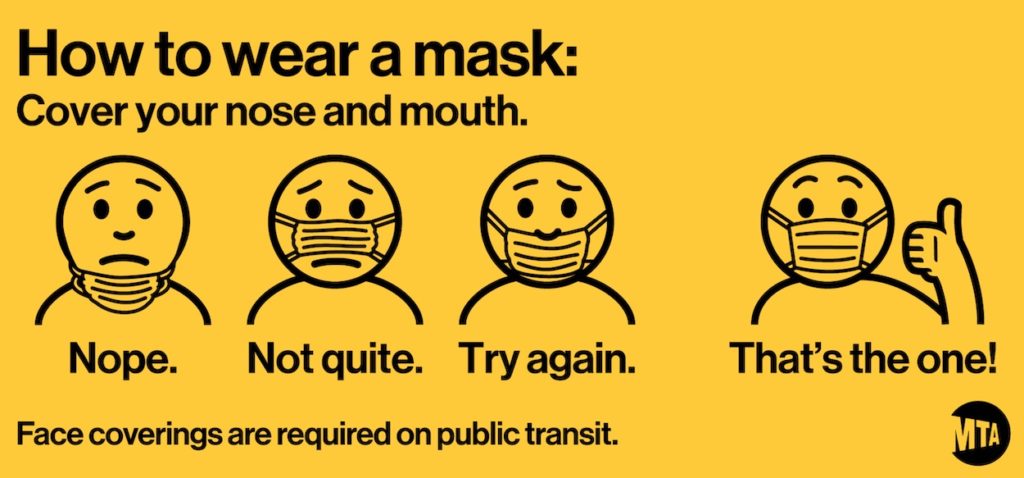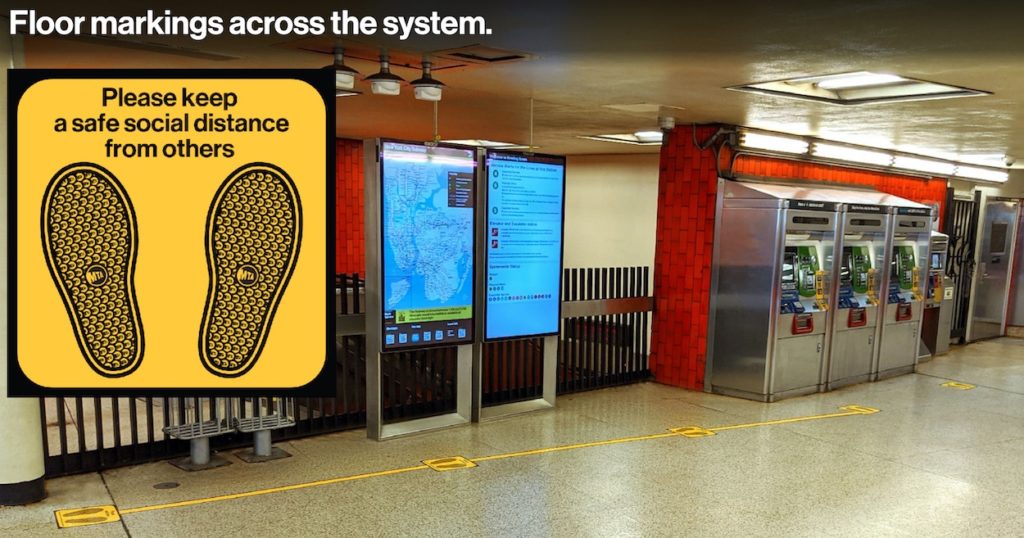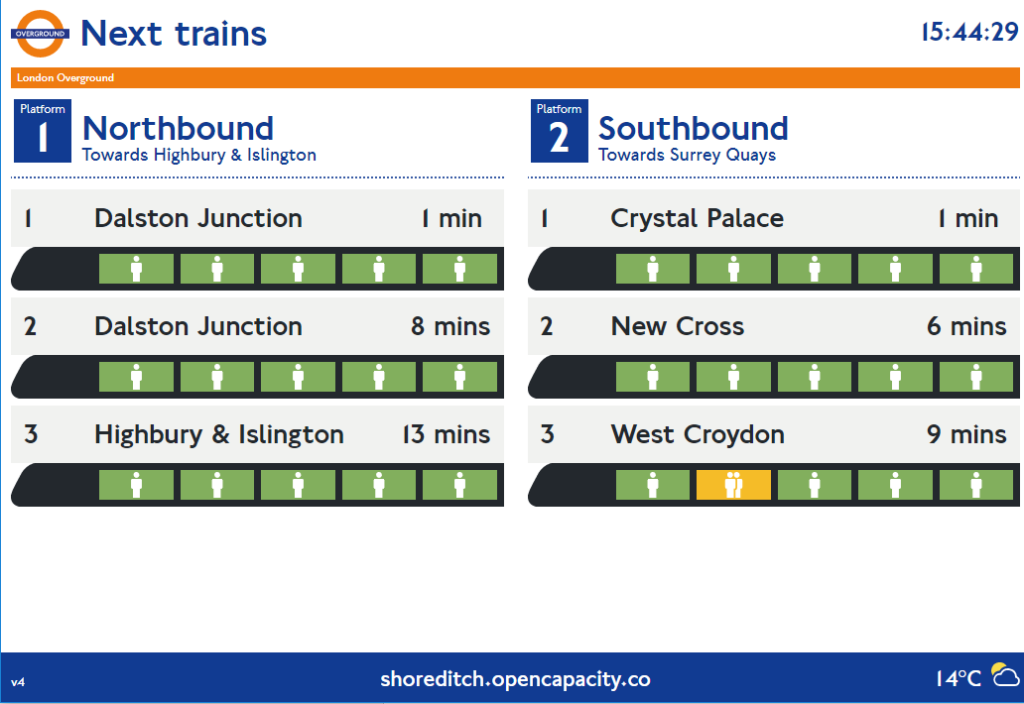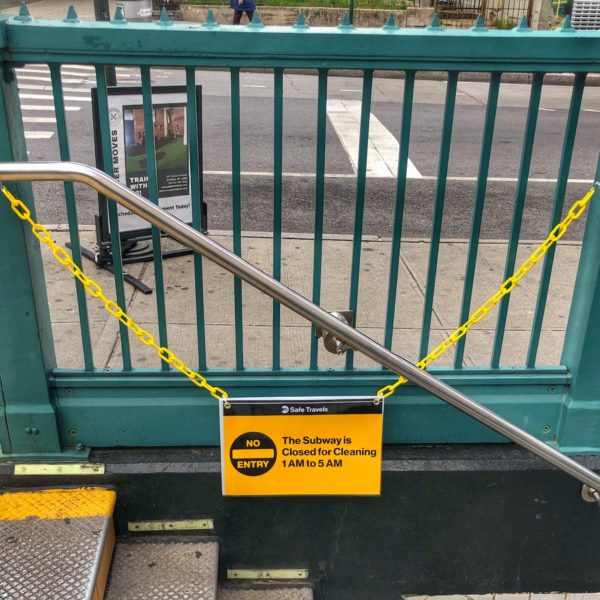
Trains keep running every night, but passengers aren’t allowed on the subway. (Photo by Benjamin Kabak)
Every few weeks, the absurdity of the MTA’s overnight subway closure is thrust into the spotlight. Sometimes, a tweet describing how the trains are still running even though riders aren’t allowed on board goes viral. Sometimes, MTA executives draw headlines when they admit to state representatives that the agency is not in fact saving any money by denying passengers subway rides from 1 a.m. to 5 a.m. each night.
That’s what happened last week during an Albany hearing on the very precarious state of the MTA’s budget. When grilled by Robert Carroll, a Brooklyn Assembly representative who has co-sponsored a bill that would mandate restoration of 24/7 passenger service, MTA CFO Bob Foran acknowledged that the MTA is not saving any money. “That was not done as a cost saving effort,” Foran said. “We are still running trains. They are to get our workforce back and forth.”
This is of course not a surprise to those in the know. It was an open secret for months that the MTA is still running its regularly scheduled overnight service but without passengers, and it was an open secret for months that the overnight denial of service isn’t a cost-saving measure. While the MTA can point to some minimal productivity gains that could have been achieved with FastTrack-esque shutdowns, the agency never intended to use the overnight closures to save money or increase capital work. The system is simply too vast with too many projects that were planned too long ago for a short four-window to do much for productivity.
Rather, the shutdowns were about implementing a legal mechanism to permit the MTA to remove unsheltered New Yorkers from the subway system while bolstering a necessary cleaning regiment that could have continued while essential workers were permitted access to the subway overnight. That trains are still running on a normal overnight schedule gives that game away, and headways are long enough at night that the MTA could take yard most trains at the end of their runs if they truly had to clean them with no passengers on board. The incremental personnel costs wouldn’t be out of line with the costs the MTA incurs running empty trains, and essential workers would have normal commutes rather than the lengthy trips I wrote about in August.
This is neither here nor there right now. Gov. Andrew Cuomo, through MTA leadership, has made clear that 24/7 passenger service will not return to the subways until the pandemic is over, a philosophy that incorrectly views overnight service as more beneficial to leisure, rather than essential, travel. But it doesn’t have to be this way. As the vaccine effort ramps up, Cuomo and the MTA have a very easy way to gracefully usher in the return of passengers to the subways on a 24/7 by tying it to access to vaccination hubs.
This is, of course, not a novel idea. In fact, a group of City Council representatives penned a letter to the MTA last week saying as much. “Not only has the suspension of late-night service and frequency reduction caused a great strain on the commutes of essential workers who every day have been putting their lives on the line, but the subway is now going to play an important role in bringing the City through to the other side of this pandemic crisis,” the letter notes. “With the creation of 24 hour vaccine hubs and, hopefully, accelerated supply from the new Biden Administration, New York City is working hard to ramp up its vaccine roll out. If these Vaccine hubs are going to be operating 24 hours a day, 7 days a week, the city will need its public transportation infrastructure to be operating at the same time and capacity…It is of the utmost important to address the limited subway service immediately and restore 24-hour service.”
The political opening is there for the governor, but it’s not quite as easy as removing the chains blocking the stations at night. It requires some careful public messaging that explains how the MTA will keep cleaning and why the risk of viral transmission on transit remains low, two approaches few leaders in American government have taken throughout the pandemic. In a recent internal survey, the MTA found out that over 75% of current customers believe cleaning and disinfecting efforts make them “feel safe” when using transit. The same percentage has noticed that trains are cleaner since the overnight shutdowns began in May, and 55% of lapsed riders say cleanliness of trains is very important to them as and when they return to the subways.
Even though the virus is largely airborne and surface transmission is rare, keeping the trains clean is important for maintaining public trust in transit. Thus, if the MTA restores overnight service prior to the nebulous end of the pandemic, the agency must continue to stress that cleaning continues, as it does during the day, even if surface cleaning is more about perception than actual risk.
This of course puts the MTA in between a rock and a hard place. While the CDC has told the MTA to continue to disinfect surfaces while combating aerosol-based transmission, the MTA will have to keep spending a lot of money on surface cleaning to insure adequate faith in the system. And the issue of homelessness looms large. The MTA is not a housing agency nor are agency staffers experts in housing policy, but by denying passengers access to the trains overnight, the MTA has temporarily solved the problem of people remaining in the way on trains that need to be cleaned. Restoring 24/7 passenger service will force the MTA to reconsider this approach to removing homeless New Yorkers from the trains.
I don’t have a good answer here; it’s ultimately up to the city and state to house their unsheltered residents. But it shouldn’t be an excuse to deny essential workers a fast ride home or a city itching to escape quarantine access to 24/7 vaccine hubs. Allowing passengers on the trains overnight shouldn’t wait until the end of the pandemic when nightlife returns and things are moving back to normal. Once the vaccine supply is in place, Gov. Cuomo should allow passengers back on the subway overnight as a recognition of the way people need to travel and a symbol of a city on the rebound.

